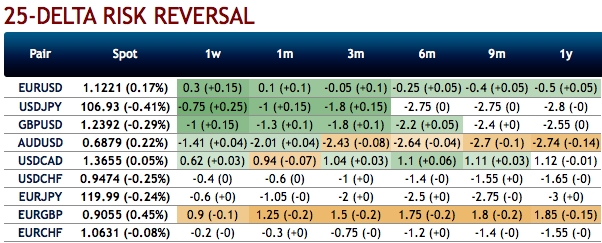Bullish Scenarios see USDCAD above 1.45 levels if:
1) A second COVID-19 wave catalyses another global sudden-stop and aggravates Canada’s external deficits or
2) The renewed oil price war or demand shock drives additional industry-wide crude production shut-ins.
3) US-China tariff war restarts.
Bearish Scenarios see USDCAD below 1.30 levels if:
1) The COVID recovery is complete (V-shape to 2019 total output).
2) The quicker than expected resolution of the COVID-19 crisis via comprehensive health solution (treatment & vaccine) allowing a quicker economic recovery.
Disproportionately large repatriation by residents helped support Canada’s BoP during the March panic, but external financing vulnerabilities remain a potential drag for CAD, with the ability to attract ongoing inflows impaired post-COVID crisis. Incoming data in the past month shed better light on flows supporting CAD’s relative resilience during the peak of the COVID panic (compared to some other high-beta and petro-FX peers). Recently released March international portfolio flows data show 1.4% of GDP worth of net portfolio inflows in March alone helping offset some of the excess USDCAD demand during the peak of the crisis.
Hence, we make mark-to-market to our USDCAD projections following the recent sizable USD weakness, but maintain an upward bias in the pair to reflect structural CAD headwinds over the 1y forecast horizon. Our near-term USDCAD forecasts are slightly lower than spot to reflect that USD weakness can persist if re-openings around the world continue to contribute a strong pro-growth environment and help buoy risk sentiment. But we believe that the structural drags in Canada will ultimately weigh on CAD over the medium-term, particularly as the local growth story remains bleak from oil and financing the joint C/A-FDI deficit will remain precarious given that Canada no longer enjoys 2019’s best-in-G10 yield advantage. We are also cognizant of longer-term economic forces (quasi-permanent economic scaring associated with dislocations in the labor markets, higher debt levels, the behavioural shifts from consumers and corporates) as well as medium-term risks like fiscal tightening amid an incomplete global recovery by year-end, in addition to tail risks of COVID second waves. As such, we project USDCAD to 1.38 by year-end, and 1.42 by 2Q’21.
Contemplating above factors, we maintain that directionality from here. It makes sense that CAD has focus on Canada's specific weaknesses grows larger.
Hence, add longs in USDCAD via options with diagonal tenors contemplating above fundamental factors and below OTC indications:
The fresh negative bids for 1m tenor to the existing bullish risk reversal setup indicate the broader hedging sentiments for the upside price risks amid minor hiccups in the shorter tenors (refer 1st chart).
While to substantiate this broader bullish hedging stance, we capitalize on the positively skewed IVs of 3m tenors that indicates the upside risks in in the longer tenors (see bids for OTM call strikes upto 1.41, refer 2nd chart).
Hence, at this juncture (spot reference: 1.3663 levels), we upheld our shorts in CAD on hedging grounds via 3m/1m (1.34/1.41) debit call spread. If the scenario outlined above unfolds, we will re-assess our stance but at the moment there are no changes to our CAD recommendations. Courtesy: Sentry, Saxo & JPM



 Gym hygiene guide: the dangerous bacteria that lurk in dirty fitness equipment and clothes
Gym hygiene guide: the dangerous bacteria that lurk in dirty fitness equipment and clothes  Is attachment theory actually important for romantic relationships?
Is attachment theory actually important for romantic relationships?  EU enlargement: What does the future hold?
EU enlargement: What does the future hold?  Low pay and few contracts make freelance journalism a bleak prospect in 2024
Low pay and few contracts make freelance journalism a bleak prospect in 2024  FxWirePro- Gold Daily Outlook
FxWirePro- Gold Daily Outlook  ‘They don’t have enough’ – schools in England are running food banks for families
‘They don’t have enough’ – schools in England are running food banks for families  Mexico’s slow slide towards vigilante violence
Mexico’s slow slide towards vigilante violence  FxWirePro- Gold Daily Outlook
FxWirePro- Gold Daily Outlook  Why the government’s haste in changing the health system could come back to haunt it
Why the government’s haste in changing the health system could come back to haunt it  FxWirePro- Gold Daily Outlook
FxWirePro- Gold Daily Outlook  Video games at work? It sounds fun, but there are ethical risks
Video games at work? It sounds fun, but there are ethical risks 































